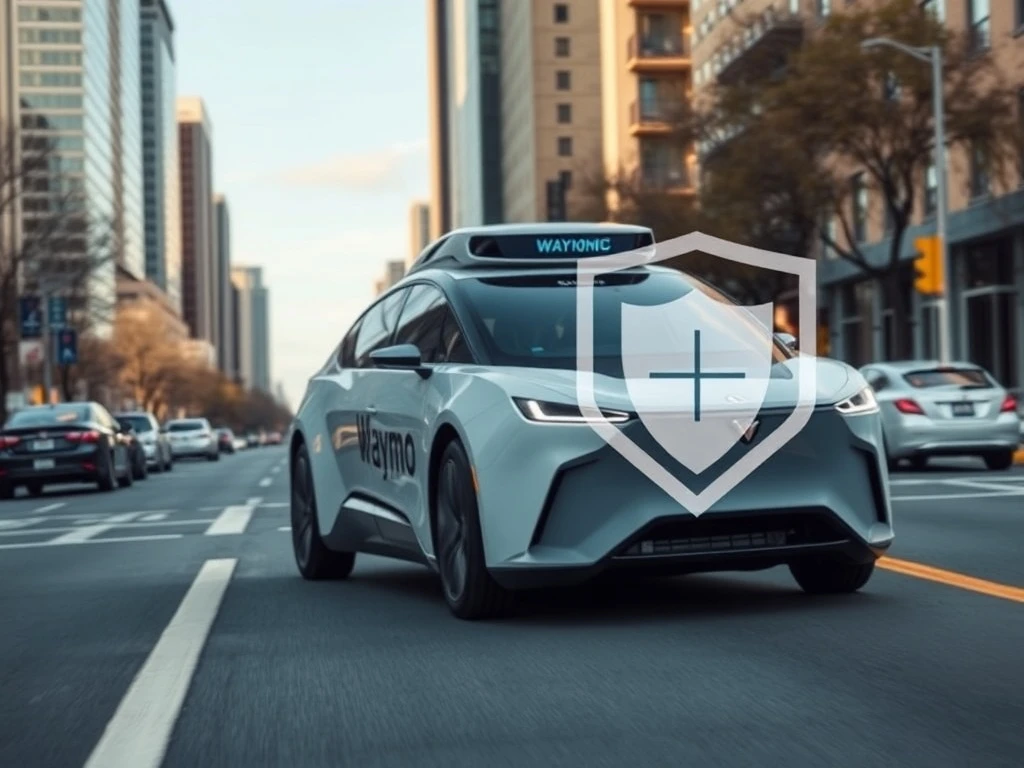Waymo Probe Concludes: A Crucial Win for Self-Driving Car Safety and Innovation

In the rapidly evolving world of disruptive technologies, where innovation often outpaces regulation, the recent conclusion of the NHTSA investigation into Waymo’s self-driving operations offers a fascinating case study. Just as the crypto space grapples with regulatory uncertainty, the autonomous vehicles sector seeks clarity. This landmark decision could set a precedent for how cutting-edge tech, like self-driving cars, navigates oversight, potentially influencing the future of decentralized autonomous organizations (DAOs) and other emerging tech paradigms.
What Did the Waymo Probe Reveal?
For 14 months, the National Highway Traffic Safety Administration (NHTSA) delved deep into Waymo, Alphabet Inc.’s self-driving subsidiary. The Waymo probe, initiated in May 2024, meticulously reviewed 22 complaints concerning traffic violations and unexpected behaviors by its autonomous vehicles. These reports included 17 minor collisions, notably a 2024 incident where a Waymo vehicle struck a utility pole. The agency’s thorough review culminated in the decision to close the investigation without enforcement action, a significant milestone for the autonomous driving industry.
How Did Waymo Address Safety Concerns for its Autonomous Vehicles?
NHTSA’s decision was heavily influenced by Waymo’s proactive and decisive actions. The company undertook two voluntary recalls:
- Addressing the Pole Collision: This recall specifically targeted the incident involving the utility pole, implementing software fixes to prevent recurrence.
- Improving Obstacle Detection: A broader recall focused on enhancing the LiDAR-based system’s ability to identify challenging obstacles like chained barriers, road gates, and construction zones. Waymo acknowledged that its vehicles previously struggled with these scenarios, leading to erratic or delayed decision-making.
These software updates were critical. They demonstrated Waymo’s commitment to prioritizing vehicle safety and adapting its technology based on real-world incidents. NHTSA’s technical evaluation validated these improvements, confirming that Waymo’s responses aligned with evolving regulatory expectations for autonomous systems.
Navigating the Future of Self-Driving Cars: Opportunities and Challenges
The closure of the NHTSA investigation marks a pivotal moment for Waymo and the broader development of self-driving cars. For Waymo, the absence of new mandates is a substantial boost to its competitive position. The company is already expanding its fleet to over 1,500 autonomous vehicles across the U.S., offering 250,000 weekly fully driverless rides. This regulatory clarity could accelerate planned expansions into major cities like New York, Miami, and Washington, D.C., and further solidify its recent collaboration with Uber in Atlanta.
However, the path forward is not without its challenges:
- Public Trust: Incidents like the 2023 Cruise pedestrian accident continue to fuel skepticism about the technology’s reliability and safety.
- Local Regulations: Cities like Boston have delayed decisions on allowing autonomous vehicles, emphasizing the need for greater public trust and local oversight.
- Complex Scenarios: While improvements have been made, the agency still cited past incidents where vehicles collided with “clearly visible objects” a human driver would avoid, highlighting the complexity of real-world driving environments.
Waymo’s cautious approach, engaging with local leaders and not announcing confirmed launch dates for cities like Boston, reflects the ongoing challenges of scaling adoption while maintaining public confidence.
The Impact of the NHTSA Investigation on Regulatory Precedent
This decision sets a significant precedent for how regulators might approach similar investigations in the rapidly advancing autonomous technology sector. NHTSA’s reliance on Waymo’s data transparency and iterative improvements signals a shift toward adaptive oversight. Instead of punitive measures, the focus appears to be on encouraging preemptive fixes and continuous technological evolution. This approach acknowledges that traditional compliance frameworks may struggle to keep pace with rapid technological progress, particularly in fields like autonomous vehicles where learning and improvement are continuous processes.
Prioritizing Vehicle Safety: A Blueprint for Innovation
Waymo spokesperson Katherine Barna reiterated the company’s commitment to prioritizing vehicle safety, expressing satisfaction with the investigation’s resolution. This outcome reflects a delicate regulatory balancing act between fostering innovation and ensuring public safety. By validating Waymo’s corrective actions and software enhancements, NHTSA has provided a blueprint for how tech companies can proactively address safety concerns and collaborate with regulatory bodies. This model of transparent data sharing and continuous improvement could become a standard for other emerging technologies, including those within the crypto and blockchain space, as they too navigate regulatory landscapes.
The closure of the Waymo probe is more than just a regulatory outcome; it’s a testament to the ongoing evolution of autonomous technology and the adaptive nature of its oversight. While challenges remain, this decision marks a significant step forward in building trust and paving the way for a future where self-driving cars become a safer, more integrated part of our daily lives.
Frequently Asked Questions (FAQs)
1. What was the NHTSA investigation into Waymo about?
The NHTSA investigation, which lasted 14 months, focused on 22 complaints related to traffic violations and unexpected behavior by Waymo’s autonomous vehicles, including 17 minor collisions and an incident where a vehicle struck a utility pole.
2. Why did NHTSA close the probe without enforcement action?
NHTSA closed the investigation because Waymo implemented two voluntary recalls and software updates to address the safety concerns. The agency’s technical evaluation confirmed that these improvements demonstrated adequate safety measures.
3. How did Waymo address the identified safety concerns?
Waymo addressed the concerns through software fixes that enhanced its LiDAR-based system. These improvements specifically targeted the identification of challenging obstacles like chained barriers, road gates, and construction zones, which had previously caused erratic vehicle behavior.
4. What are the broader implications of this decision for the autonomous vehicle industry?
The decision strengthens Waymo’s competitive position, potentially accelerating its expansion plans. It also sets a precedent for regulatory bodies to prioritize preemptive fixes and adaptive oversight, encouraging data transparency and continuous improvement from autonomous technology companies.
5. Does this mean all self-driving cars are now considered safe?
No, the decision pertains specifically to Waymo’s actions and improvements. While it’s a positive step for Waymo, the broader self-driving car industry still faces ongoing scrutiny, public skepticism, and varying local regulations, as highlighted by incidents involving other companies like Cruise.
6. What challenges remain for autonomous vehicle adoption?
Key challenges include building greater public trust, navigating complex and varied local regulatory environments, and continuously refining the technology to handle all real-world driving scenarios as safely as or safer than human drivers.









